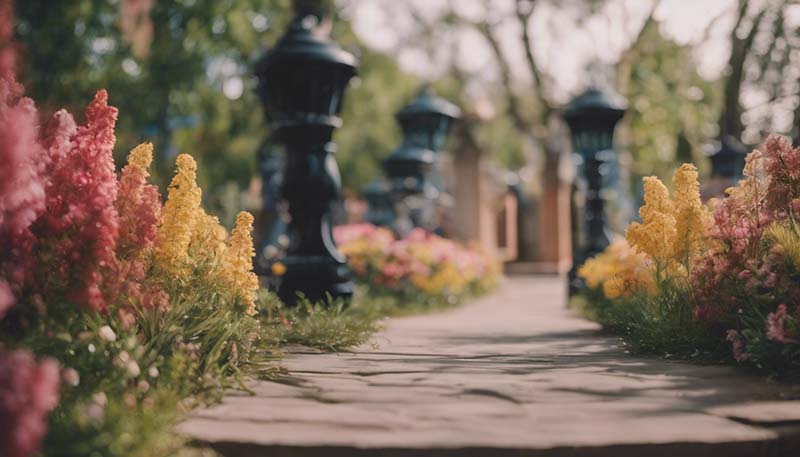The Role of Color in Outdoor Spaces
The Role of Color in Outdoor Spaces
Introduction
The use of color in outdoor spaces is a powerful tool for creating a desired atmosphere, enhancing the aesthetics of the environment, and influencing the mood and behavior of the people who interact with the space. This article explores the role of color in outdoor spaces, its psychological effects, and practical considerations for incorporating color effectively.
Psychological Effects of Color
Colors have the ability to evoke emotions and feelings. In outdoor spaces, the choice of colors can significantly impact the experience of the users. Here are some common psychological effects associated with different colors:
Blue
Blue is often associated with calmness, tranquility, and stability. It can create a sense of peace and relaxation in outdoor spaces, making it a popular choice for water features and pools.
Green
Green is the color of nature and is often associated with growth, renewal, and health. It can create a sense of freshness and vitality in outdoor spaces, making it a natural choice for gardens and parks.
Advertisement
Red
Red is a bold and energetic color that can stimulate excitement and passion. It can be used to draw attention to specific features in outdoor spaces, such as entrances or focal points.
Yellow
Yellow is a warm and optimistic color that can create a sense of happiness and cheerfulness. It can be used to brighten up outdoor spaces and create a welcoming atmosphere.
White
White is a clean and neutral color that can create a sense of purity and simplicity. It can be used to create a minimalist and modern look in outdoor spaces.
Practical Considerations for Using Color
When incorporating color in outdoor spaces, there are several practical considerations to keep in mind:
Durability
Outdoor spaces are exposed to various weather conditions, so it's essential to choose colors that are durable and can withstand sun, rain, and temperature changes.
Maintenance
Some colors may require more maintenance than others, especially in outdoor settings. It's important to consider the upkeep required for different colors and materials.
Harmony and Contrast
Creating a harmonious color scheme in outdoor spaces is crucial for achieving a balanced and visually appealing design. It's also important to use contrast to highlight specific features and create a sense of depth.
Local Climate and Culture
The local climate and culture can influence the choice of colors in outdoor spaces. For example, in warmer climates, lighter colors may be preferred to reflect sunlight and reduce heat absorption, while in colder climates, darker colors may be used to absorb heat and create a sense of warmth.
Case Studies
Here are a few case studies that demonstrate the effective use of color in outdoor spaces:
Gardens by the Bay, Singapore
The Gardens by the Bay in Singapore is a prime example of how color can be used to create a vibrant and inviting outdoor space. The use of bright and bold colors, such as reds, purples, and yellows, creates a striking contrast against the green foliage, drawing visitors' attention and creating a memorable experience.

The High Line, New York City
The High Line in New York City is a public park built on a historic freight rail line. The use of greenery and natural colors creates a serene and peaceful atmosphere, providing a much-needed respite from the bustling city life.
Burj Khalifa Park, Dubai
The Burj Khalifa Park in Dubai showcases the use of water features and blue colors to create a sense of tranquility and relaxation. The park's design incorporates water elements, such as fountains and ponds, which are complemented by the surrounding greenery and blue sky.
Conclusion
The role of color in outdoor spaces is significant and multifaceted. By understanding the psychological effects of color, considering practical factors, and drawing inspiration from successful case studies, designers can create outdoor spaces that are not only visually appealing but also emotionally engaging and functional.